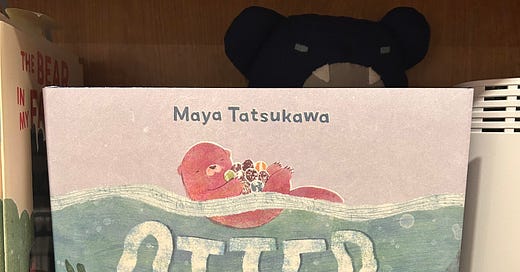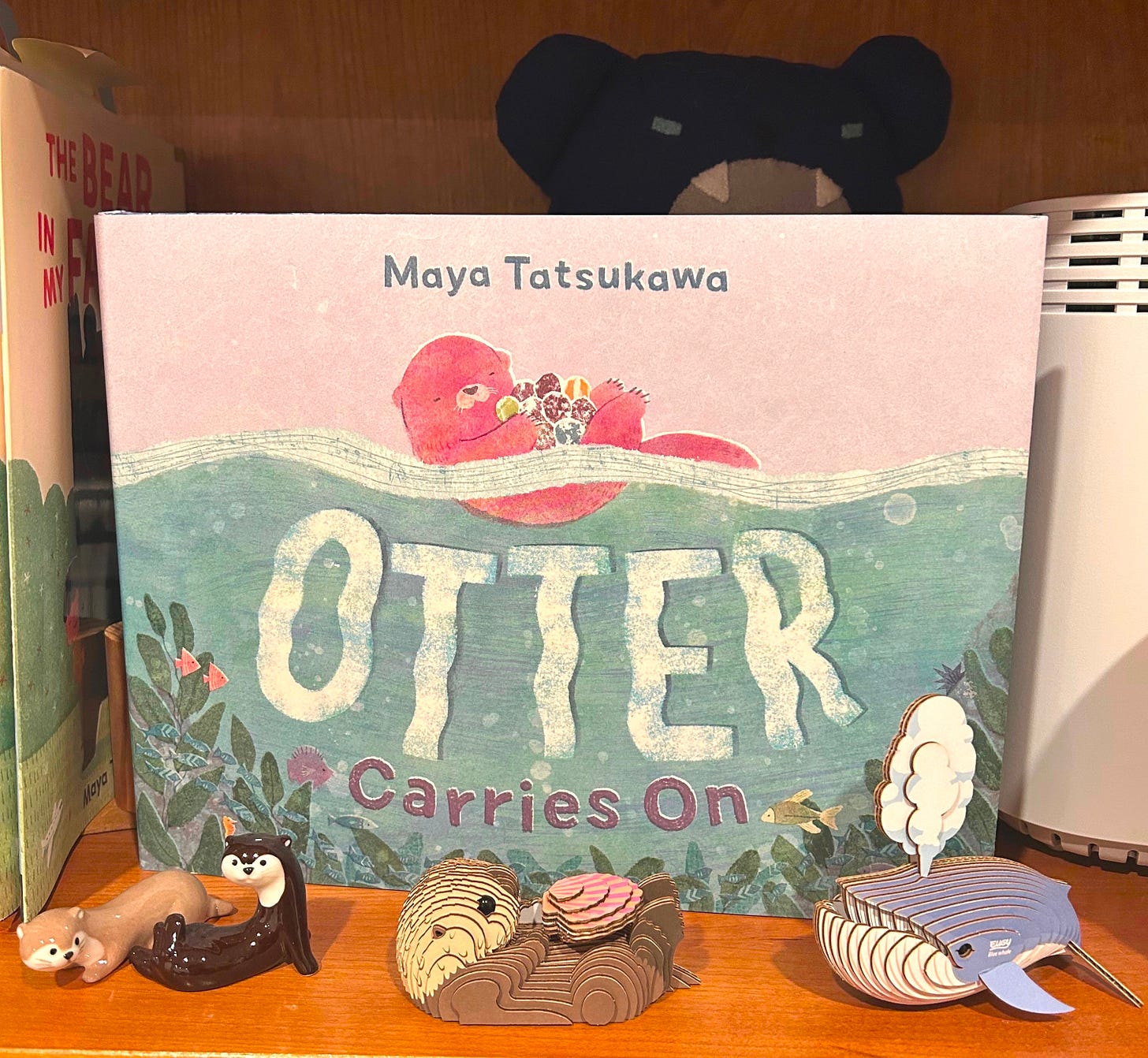Last week was kind of a heavy post about why I wrote OTTER… so this week is some fun otter facts to celebrate pub week!
Right around the time I began working on sketches for OTTER, I had my first post-covid trip to Japan planned and found there were 2 aquariums with otters. Lucky me. One was at the Marine World Uminonakamichi in Fukuoka where I was staying for a few weeks!
So with the help of my aunt & uncle, I reached out to see if I could talk with the caretaker to ask some questions. They very graciously accepted my request for an interview with not only the caretaker but with Riro, the otter, too!
Unfortunately, Riro passed away in the beginning of 2025, but lived a long life of 17 years (approx 70 human years). I’m very grateful for the chance to meet this very sweet otter up close during his lunch time.
Here are some of the useful facts I learned that informed how my story took shape.
First, a very important note about otters. My book is about a sea otter and not a river otter. There’s a very key distinction! Sea otters float but river otters don’t — they only swim. Sea otters usually only float when they’re sleeping. Otherwise they’re constantly moving back and forth or sunbathing for short periods.
You’ve probably seen on social media how sea otters can be very particular with the rock they use for opening shells, and can hold it in the skin flap around their armpit. But it’s actually otter dependent. Riro didn’t have an especially big pocket while Mei, the famous otter at Toba Aquarium is known for holding up to 10+ objects! Otters might store some squid in their armpit pocket to eat later which is why I decided little otter finds a clam to eat when they start dropping rocks.
Otters don’t have blubber like most sea mammals but a thick water-resistant fur coat. They need to constantly groom every 3-4 hours because they are blowing air into the fur to keep it fluffy and warm before it deflates. That’s why in the book, the other otters worry about little otter staying warm, and little otter starts to become cold when it’s out in the open sea unable to groom.
Otters can be friendly with whales, seals and dolphins. The caretaker told me they have pretty sensitive ears but probably can’t hear a whale’s echo location. So I figured maybe little otter could be surprised when the little whale suddenly jumps out of the water to say hello.
In the US, sea otters live in dense kelp forests in California and Alaska. The otters will wrap themselves up in the kelp when they sleep or during a storm so they don’t drift away. But a key moment in my story is that little otter finds themself out in the open sea. Could that actually happen when US otters live in enclosed areas like bays and reefs? Well, I found out in Japan, there are wild sea otters in Hokkaido who don’t have the same habitat of a dense kelp forest. They actually drift out to sea when they fall asleep because they don’t have kelp to hold onto. But don’t worry! When they wake up they find their way back closer to the shore.
There’s so many interesting otter facts, but I’ll end it here for today with a cute video of Riro showing off some of his tricks and eating a squid. Yum!





Adorable! (the otter and the book!)